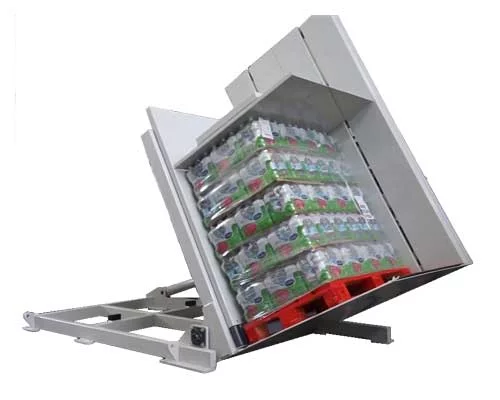Why Are Malaysia's Manufacturers Replacing Manual Handling with Pallet Inverters?
Are you watching your operational costs climb while your team struggles with slow, labor-intensive tasks? Many factory owners I speak with are facing this exact problem. Manual handling, especially moving goods from one pallet to another, is a major bottleneck. It's slow, it's physically demanding, and it puts your employees at risk of injury. In a competitive global market, this kind of inefficiency is more than just a headache; it's a direct threat to your bottom line, leading to production delays, damaged products, and rising insurance costs. But smart manufacturers in growing economies like Malaysia are finding a powerful solution. They are moving away from old methods and embracing automation to stay ahead.
Malaysian manufacturers are replacing manual handling with pallet inverters primarily to boost operational efficiency, improve worker safety, and reduce costly product damage. This equipment automates the process of transferring loads between pallets, a task that is critical in logistics, warehousing, and production. By using a pallet inverter, a single operator can quickly and safely rotate an entire palletized load to swap out the pallet, check for damage, or retrieve items from the bottom of the stack. This move cuts down on labor requirements and minimizes the manual lifting that often leads to workplace injuries and damaged goods.
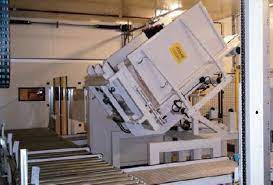
I've walked through countless factories in my career, from my early days as an engineer to running my own facility. I've seen firsthand how a simple process improvement can have a massive impact. The shift towards pallet inverters isn't just a trend in Malaysia; it's a smart business decision being made by forward-thinking leaders worldwide. They understand that investing in the right technology is not just about solving today's problems but about building a more resilient and profitable operation for the future. Let's explore the specific challenges this equipment solves and why it might be the right strategic move for your business too.
How Do Pallet Inverters Directly Address Rising Labor Costs and Safety Concerns?
You see the numbers every quarter. Labor costs are going up, and finding reliable people for physically demanding jobs is getting harder. On top of that, there's the constant worry of a workplace accident. A single back injury from improper lifting can mean lost time, high medical bills, and a drop in team morale. These issues aren't just operational hurdles; they are significant financial and human risks that can halt your production line and damage your company's reputation. The good news is that there is a direct and proven way to tackle these challenges head-on by automating the most dangerous and repetitive tasks.
A pallet inverter directly addresses rising labor costs and safety concerns by automating the heavy lifting. This allows one trained operator to perform a pallet exchange in under a minute, a task that might take multiple workers much longer to do manually. By removing the need for manual stacking and re-stacking, you drastically reduce the risk of musculoskeletal injuries, which are among the most common and costly workplace accidents. This not only lowers your insurance premiums and compensation claims but also creates a safer, more sustainable work environment for your team.
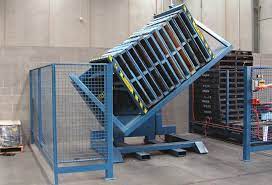
The Financial Reality of Manual Labor vs. Automation
When I started my own factory, I analyzed every single cost. I learned that the true cost of an employee is not just their salary. You have to factor in insurance, training, potential turnover, and the cost of inefficiency. Manual pallet handling is a perfect example of these hidden costs. Let's break it down. An operator might be paid a certain amount per hour, but if they are tired or strained, their productivity drops. If they get injured, the costs skyrocket.
A pallet inverter changes this entire equation. It's a one-time capital expense that provides a consistent, predictable output day after day. It doesn't get tired, it doesn't ask for a raise, and its operational cost is minimal—just electricity and routine maintenance. When you compare the two side-by-side, the financial argument becomes very clear. The initial investment in the machine is often paid back much faster than you would think, simply from the direct labor savings and the avoidance of a single serious injury.
| Cost Factor | Manual Handling (Team of 2) | Pallet Inverter (1 Operator) |
|---|---|---|
| Direct Labor | High and recurring (wages, benefits) | Low (one operator for a short duration) |
| Injury Risk | High (back strain, repetitive stress) | Extremely Low (process is automated) |
| Insurance Premiums | Higher due to risk classification | Lower due to demonstrated safety |
| Productivity | Variable, depends on worker fatigue | Consistent and Fast (e.g., <60 seconds/pallet) |
| Turnover Costs | High (physically demanding job) | Low (operator role is less strenuous) |
Creating a Safer and More Productive Workplace
Safety is not just about compliance; it's about building a strong company culture. When your employees see that you are investing in tools to make their job safer and easier, it builds trust and loyalty. I have seen this effect myself. When we installed our first automated systems, the atmosphere on the factory floor changed. People felt valued and were more engaged in their work. This leads to higher quality output and less employee turnover. A pallet inverter removes one of the most dreaded tasks from the floor. No one enjoys manually lifting heavy boxes or bags all day. By automating this, you free up your valuable team members to focus on tasks that require their skills and intelligence, like quality control or machine operation, rather than pure physical force. This is a strategic move that pays dividends in both safety and productivity.
What is the Real ROI of a Pallet Inverter in a High-Volume Production Line?
As a business owner, you scrutinize every major purchase. You need to know, "When will this investment pay for itself?" It's a fair and essential question. Justifying a piece of equipment like a pallet inverter can seem difficult if you only look at one or two factors. You might think it only replaces a couple of workers. But a machine that doesn't deliver a clear and substantial return on investment is just an expensive piece of metal taking up valuable floor space. To truly understand its value, you need to look at the complete picture of cost savings and efficiency gains.
The real ROI of a pallet inverter in a high-volume line is a combination of multiple financial benefits. It comes from drastic reductions in direct labor costs, a significant decrease in product damage, increased operational throughput, and lower workers' compensation premiums. Additionally, it can eliminate the costs associated with using rental or third-party pallets by allowing easy transfer to your own in-house pallets. When all these factors are combined, most companies I've worked with see a full payback period of between 12 and 24 months, making it one of the most compelling investments for improving warehouse and logistics operations.
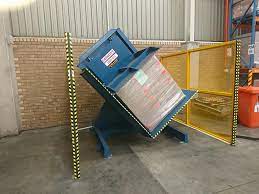
Breaking Down the Payback Calculation
Calculating the ROI isn't complex. It's about being thorough. I always advise clients to start with the most obvious savings and then add the secondary, less obvious benefits. You can build a simple spreadsheet to see the potential for your own operations.
First, look at labor. How many people does it take to manually transfer a pallet? How long does it take them? Multiply that time by their fully-loaded hourly wage. Now, compare that to one operator taking about one minute with an inverter. The difference, scaled over a year, is often staggering.
Next, consider product damage. What is your current damage rate from manual handling? Even a 1% reduction in damage can translate to thousands of dollars in saved revenue. A pallet inverter offers a gentle, controlled rotation that protects your goods.
Then, add other factors. Can you reduce pallet rental fees? Will your insurance premiums go down? The numbers add up quickly.
| ROI Component | How to Calculate Your Savings | Potential Annual Savings (Example) |
|---|---|---|
| Labor Savings | (Manual Time - Inverter Time) x Hourly Rate x Pallets/Day x Days/Year | $30,000+ |
| Damage Reduction | (Value of Goods Damaged Annually) x (% Damage Reduction) | $15,000+ |
| Throughput Gain | (Value of Extra Pallets Processed) x (Profit Margin) | Varies by operation |
| Pallet Cost Savings | (Rental Pallet Fee) x (Number of Pallets Swapped Annually) | $10,000+ |
| Insurance Savings | Reduction in annual workers' compensation premium | $5,000+ |
The Unseen Benefits That Boost Your Bottom Line
Beyond the hard numbers, there are other returns that are just as important. A streamlined, automated process creates predictability. In an operation like a steel mill, where timing and scheduling are everything, this predictability is invaluable. It helps you meet deadlines and keep your customers happy. It also improves inventory management. With a pallet inverter, you can easily access products at the bottom of a stack without disrupting the entire pile. This "First-In, First-Out" (FIFO) capability is crucial for managing materials with a shelf life or specific production dates. Finally, a modern, safe, and efficient facility is a powerful marketing tool. It shows your customers and partners that you are a serious, forward-thinking organization committed to quality and reliability. This was a key factor for me; it helped us win contracts with larger, more demanding clients.
How Can Pallet Inverters Improve Product Quality and Reduce Damage?
You work hard to produce a quality product. Whether it's precisely manufactured steel coils or carefully packaged goods, the last thing you want is for that value to be lost in the final stages of handling. A crushed box, a shifted load, or contamination from a dirty pallet can turn a profitable shipment into a costly write-off. This damage not only eats directly into your margins but can also lead to customer complaints and harm your hard-won reputation. The problem is that traditional handling methods, like using forklifts to bump and nudge pallets, are inherently rough. The solution is to use a system designed for gentle, controlled movement.
Pallet inverters improve product quality by substituting aggressive manual or forklift handling with a smooth, fully controlled 180-degree rotation. The machine clamps the load securely from both sides before turning it, which prevents products from shifting, falling, or being crushed. This controlled process is essential for protecting sensitive goods, maintaining the integrity of the packaging, and preventing cross-contamination from damaged or unhygienic pallets. As a result, companies that implement pallet inverters report a dramatic reduction in their product damage rates.
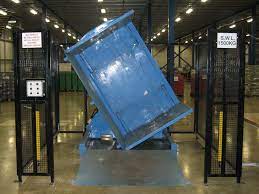
The Mechanics of Controlled, Gentle Handling
From an engineering perspective, the design of a pallet inverter is focused on one thing: stability. Let's look at how it works. The operator places the full pallet into the machine. Two strong clamping platforms then move in and apply even pressure to the top and bottom of the load. This pressure is adjustable, which is a critical feature. You can set it to be firm enough to hold a heavy load of steel wire without causing damage, or gentle enough for a pallet of fragile boxes.
Once the load is secured, the entire unit rotates smoothly. The force is distributed across the entire surface of the load, not concentrated on one point like the forks of a forklift. This eliminates the shock and vibration that cause most in-transit damage. After rotation, the old pallet is now on top, ready to be removed. A new, clean, or shipping-ready pallet can be placed on the load before it is rotated back. This process is not only gentle but also clean. It's the ideal way to transfer goods from a durable, in-house pallet to a clean, lightweight shipping pallet without ever touching the product itself.
Use Cases Across Different Industries
The benefit of reduced damage is universal, but it's particularly important in certain industries. I've helped clients in various sectors implement this technology, and each had a unique quality problem to solve.
| Industry | Common Problem Solved by Pallet Inverter | How It Improves Quality |
|---|---|---|
| Food & Beverage | Transferring from wooden factory pallets to plastic hygienic pallets. | Prevents wood splinters, dust, and bacteria from contaminating food products, ensuring compliance with food safety standards. |
| Pharmaceuticals | Maintaining a sterile environment and preventing package damage. | Allows for pallet exchange in a cleanroom environment without manual contact, protecting high-value, sensitive products. |
| Steel & Metals | Accessing damaged coils at the bottom of a stack; swapping for export pallets. | Prevents the need to unstack heavy, unstable coils, which risks edge damage or telescoping. Provides a secure way to handle dense loads. |
| General Manufacturing | Replacing a broken pallet from under a fully loaded stack. | Saves the entire load from being written off. Avoids the dangerous and time-consuming process of manually unstacking and re-stacking. |
For a steel mill owner like yourself, consider the application for steel wire coils or stacked sheets. Manually handling these is slow and risky. A pallet inverter with the right capacity can safely invert the entire stack, allowing you to replace a damaged pallet or prepare the load for shipment on an international-standard pallet. This protects the product, your people, and your profits.
What Should You Look for in a Pallet Inverter to Ensure It Meets Future Needs?
Buying a major piece of industrial equipment is a long-term commitment. You are not just solving today's problem; you are making an investment that needs to serve your company for the next 10, maybe even 15 years. It's tempting to choose the cheapest option that gets the job done now. But I've learned that this approach can be costly in the long run. If you choose a machine that is not robust or adaptable, you will find yourself facing this same challenge again in just a few years, having wasted significant capital and time. The key is to select a machine that is built for durability and ready for future integration.
To ensure a pallet inverter meets your future needs, you should look beyond the basic function and focus on build quality, adaptability, and integration potential. Key features to prioritize include a robust steel frame for longevity, adjustable clamping pressure to handle a wide variety of future products, and advanced safety systems like light curtains that exceed current standards. Most importantly, you should ask about its capability to integrate with conveyor systems, AGVs, and your plant's Manufacturing Execution System (MES). This ensures the machine will not become an isolated island of automation but a valuable part of your future digital factory.
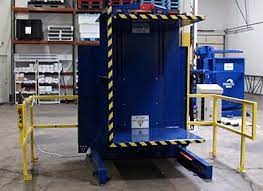
Evaluating Key Technical Specifications for Longevity
When I evaluate machinery, I look at it like an engineer. I focus on the core components and the quality of the construction because that is what determines how long the machine will last under heavy industrial use. A pretty paint job doesn't mean much after a year on the factory floor. You need to scrutinize the technical specifications and ask the supplier tough questions.
Think about your future needs. Will your products change? Will your load sizes or weights increase? A machine with a wider range of capabilities gives you more flexibility. A machine built with oversized components and high-quality hydraulics or electronics will require less maintenance and suffer fewer breakdowns. This is critical for achieving the high uptime you need in a modern production environment.
| Feature | What to Look For (To Ensure Future Viability) | Why It Matters |
|---|---|---|
| Load Capacity | Choose a capacity that is 20-25% higher than your current heaviest load. | This provides a safety margin and accommodates potential future products without needing a new machine. |
| Build Quality | Heavy-gauge steel frame, quality welds, reputable hydraulic/electrical components. | Ensures durability and reliability in a demanding industrial environment, leading to a longer service life and lower maintenance costs. |
| Adjustability | Wide clamping range and finely adjustable pressure control. | Allows you to handle a diverse range of load sizes and fragile products without causing damage, making the machine more versatile. |
| Safety Systems | Full safety fencing, light curtains, dual-channel safety circuits. | Protects your operators and ensures compliance with evolving safety standards. This is non-negotiable. |
The Pathway to a Fully Integrated, Digital Operation
A standalone pallet inverter is a great first step. It solves an immediate problem. But a truly forward-thinking leader sees it as a building block. In my journey of building my factory, we started with individual automated machines. As we grew, the next logical step was to connect them. Your pallet inverter should be ready for that step.
Ask the manufacturer: "Can this machine be fitted with automated infeed and outfeed conveyors?" "Does it have the necessary PLC and I/O ports to communicate with a central control system or an AGV?" "Can it provide data, like cycle counts or fault codes, to our MES platform?" A supplier who can confidently answer "yes" to these questions is a true partner. They understand that your goal is not just to buy a machine but to build a smarter, more connected, and more efficient factory. This path to integration is how you achieve goals like 95% uptime and full production visibility. It starts with choosing equipment that is designed for tomorrow, not just for today.
Conclusion
Replacing manual handling with pallet inverters is a strategic investment in efficiency, safety, and product quality. It's a key step towards building a more resilient and future-proof operation.

